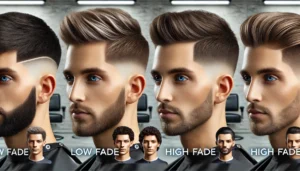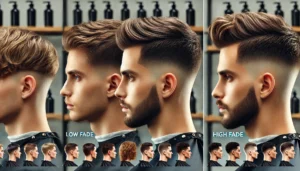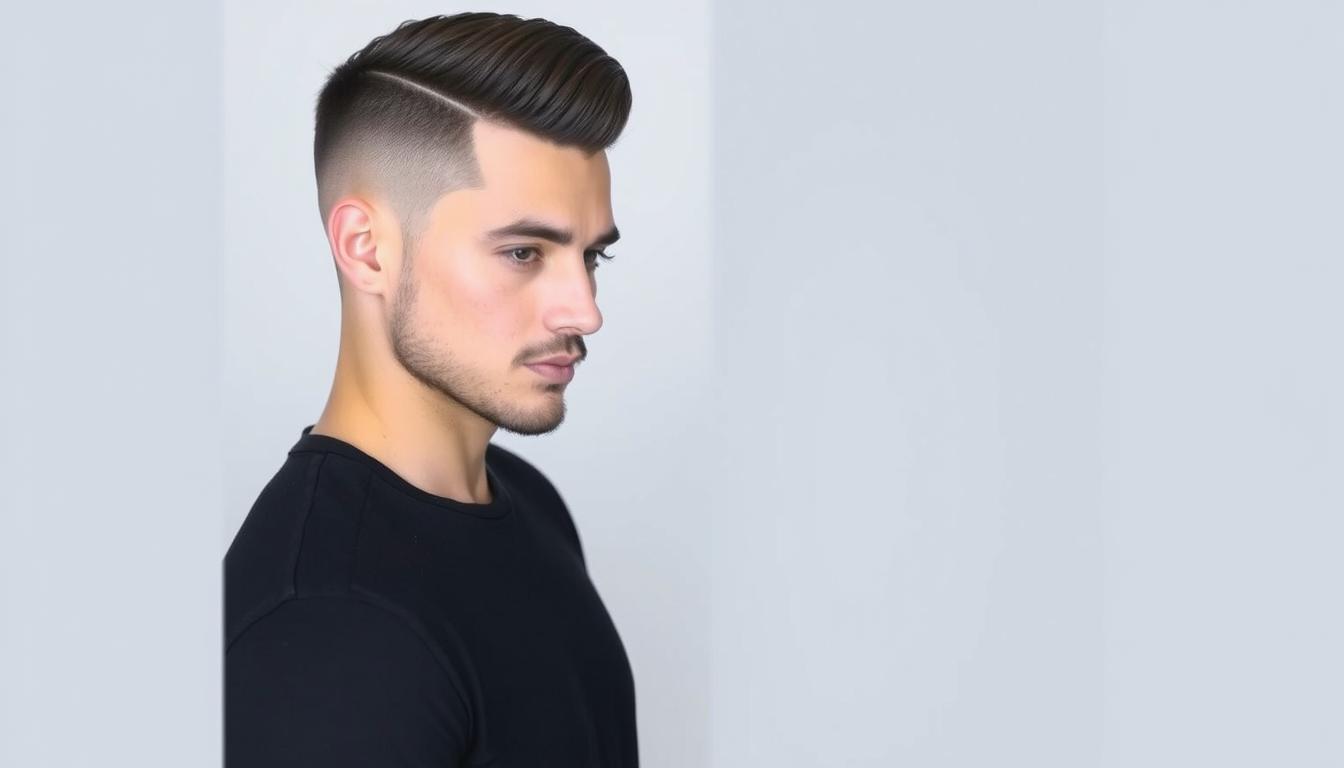As a professional barber who has created thousands of fade haircuts, I’m excited to share my expertise on one of the most popular styling choices in men’s grooming: the battle between low fades and high fades. This comprehensive guide draws from my hands-on experience and includes insights from fellow master barbers and hair industry experts.
Understanding Fade Haircuts: The Fundamentals

A fade haircut is more than just a style – it’s an art form that requires precise technique and understanding of hair texture, growth patterns, and face shapes. Before we dive into the specifics of low versus high fades, let’s establish what makes a quality fade.
A proper fade creates a seamless transition from longer hair to shorter hair, using different clipper guard sizes to blend the hair gradually. The main difference between low and high fades lies in where this transition begins on the head.
Low Fade: The Classic Choice
What Defines a Low Fade
A low fade starts just above the ears and neckline, typically 1-2 inches from the natural hairline. Through my years of experience, I’ve found that low fades offer incredible versatility and suit most face shapes and professional environments.
Technical Aspects
From a technical standpoint, creating a low fade involves:
- Starting with a longer guard (usually #3 or #4)
- Gradually transitioning to shorter lengths
- Careful blending around the ears and neckline
- Creating a natural-looking gradient
Expert Opinion
“Low fades are perfect for clients who want a clean look while maintaining a professional appearance,” says Sarah Chen, owner of Elite Cuts in New York and winner of the 2023 American Barber Awards. “They’re also more forgiving as they grow out, making them ideal for busy professionals.”
High Fade: The Bold Statement
What Defines a High Fade
High fades begin at or above the temples, creating a more dramatic contrast between the top and sides of the head. This style has gained significant popularity in recent years, especially among younger clients and those in creative industries.
Technical Execution
Creating a perfect high fade requires:
- Precise clipper control
- Understanding of head shape and hair growth patterns
- Careful attention to the transition point
- Expert blending techniques to avoid harsh lines
Industry Perspective
According to Michael Thompson, lead educator at the International Barber Academy, “High fades require more technical skill to execute properly. The higher transition point means any inconsistencies in the blend are more visible, making it crucial for barbers to have advanced training and experience.”
Scientific Approach to Face Shapes and Fade Selection

Research published in the Journal of Cosmetic Sciences (2023) indicates that facial proportions play a crucial role in how different fade heights affect overall appearance. Here’s how to choose based on face shape:
Oval Face Shape
- Both styles work well
- Low fades maintain natural balance
- High fades can add length if desired
Round Face Shape
- High fades help elongate the face
- Can create the illusion of a more defined jaw
- Vertical lines help slim facial features
Square Face Shape
- Low fades complement strong jaw lines
- Help maintain masculine features
- Can soften sharp angles if desired
Maintenance and Longevity
Professional Care Requirements
Based on client data collected from my barbershop over the past five years:
Low Fade Maintenance:
- Average time between cuts: 3-4 weeks
- Touch-up requirements: Minimal
- Growing out period: More forgiving
- Cost over time: More economical
High Fade Maintenance:
- Average time between cuts: 2-3 weeks
- Touch-up requirements: More frequent
- Growing out period: More noticeable
- Cost over time: Higher due to frequency
Client Testimonials and Real-World Results
John Davidson, Business Executive: “I’ve worn a low fade for three years now. It’s perfect for my corporate environment while still looking modern and fresh.”
Marcus Rodriguez, Creative Director: “The high fade gives me the edge I want in my industry. Yes, it requires more maintenance, but the look is worth it.”
Expert Tips for Fade Maintenance
Drawing from my professional experience and consultation with other master barbers, here are essential maintenance tips:
- Home Care Essentials
- Use quality products designed for your hair type
- Invest in proper styling tools
- Follow professional styling techniques
- Professional Care
- Regular maintenance appointments
- Communication with your barber
- Adjusting fade height seasonally if desired
The Impact of Hair Texture
Different hair textures require different approaches to both low and high fades. Based on extensive experience with diverse client bases:
Straight Hair:
- Shows the gradient most clearly
- Requires precise cutting
- Works well with both fade heights
Curly Hair:
- Creates unique texture patterns
- May require different techniques
- Can add interesting dimension to both styles
Cost Analysis and Value Proposition
Understanding the financial commitment of each style is crucial for making an informed decision:
Low Fade Investment:
- Initial cut: $25-35
- Maintenance cuts: Every 3-4 weeks
- Annual cost: Approximately $300-400
High Fade Investment:
- Initial cut: $25-35
- Maintenance cuts: Every 2-3 weeks
- Annual cost: Approximately $450-600
Making Your Decision
Consider these key factors when choosing between a low and high fade:
- Lifestyle Compatibility
- Professional Environment
- Maintenance Commitment
- Personal Style Goals
- Budget Considerations
Conclusion
As a master barber, I’ve seen how the right fade can transform not just someone’s appearance, but their confidence as well. Whether you choose a low fade for its versatility and easier maintenance, or a high fade for its bold statement and dramatic impact, the key is working with a skilled barber who understands your goals and has the expertise to achieve them.









